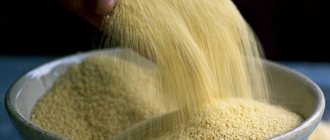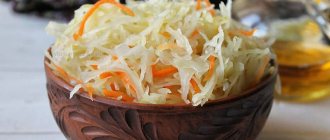Storing spices in the kitchen
In every kitchen, over time, a large number of different bags and jars with spices and seasonings accumulate.
Usually some of them are used regularly, moving chaotically around the kitchen and getting lost at the most necessary moment. The rest lie for years in the far corners, because they were simply forgotten about. Today we will look at a variety of options for organizing beautiful, compact and convenient storage of spices in the kitchen. Before choosing one of the options, you need to decide on the most important question - how spices will be stored in your kitchen: in an open way (that is, on open shelves, rails, stands, etc.) or in a closed way (inside a closed cabinet, drawer etc.). Each of them has its own advantages and disadvantages - we will list the most obvious ones.
In magnetic containers
An original and practical idea for storing spices. Magnetic jars can be placed on the refrigerator or a metal board, which is included when purchasing the design. This is a great way to replace traditional travel magnets with more practical decor. In addition, you can create a special board, painting it with magnetic paint, and turn a set of spices into a real art object.
Open storage method
Advantages:
- Convenient - everything is in sight and always at hand.
- Beautiful - you can wonderfully decorate the kitchen, giving it additional charm and comfort.
- Original - you can show imagination and self-expression.
Flaws:
- It is necessary to spend a lot of effort and time on keeping the seasonings in perfect order, constantly removing dust and grease, otherwise the storage area will look untidy and spoil the entire appearance of the kitchen.
- Most likely, you won’t be able to store spices in their original packaging - you’ll have to pour them into special jars, which also takes time.
In pockets
Another way to store spices in bags is through mesh pockets that look like a book. Convenient, since each package has its own separate place. To find the right seasoning, just “look through” the pockets. Such unusual fabric organizers can be ordered from an online store or sewn with your own hands.
Closed storage method
Advantages:
- Less time is required for cleaning - the spices will not accumulate as much dirt as when stored openly.
- You can store seasonings in their original packaging, which is quite convenient and economical.
- The kitchen is guaranteed to look neat, regardless of whether you have tidied up the spice rack or not.
- Simplicity and ease of use, without constant attention to beauty.
Flaws:
- Spices will have to be taken out from somewhere each time, and then put away again - this requires self-discipline, otherwise chaotic storage throughout the kitchen will return.
Whatever method you choose for yourself, do not forget 3 rules for organizing storage :
- All packaging and containers should be clearly visible, so you should not pile up packets of seasonings on top of each other, or block one jar with another.
- The contents of the jars or name labels should also be very clearly visible. If in a spice box you only see a lot of identical opaque lids, then there is no question of any effective storage, because it is very difficult to find anything in such a box.
- Try to store all the spices in one place (on one shelf, in one drawer, on one door, etc.) - this saves space in the kitchen, ensures order and makes searching easier. It is very difficult to find something when spices are scattered across different cabinets and shelves.
From general recommendations we will move on to a description of specific methods, which for convenience we have divided into 2 large groups - for open and closed storage.
In test tubes
A solution for those who value novelty and originality. Glass test tubes with seasonings, placed in a decorative wooden stand, look great in any interior. Instead of a storage stand, you can use a narrow shelf screwed to the wall. Adding spices from a test tube while cooking, it's easy to feel like an alchemist or a wizard.
Open storage
To make seasonings look beautiful and neat, they need to be stored in identical jars . Storing in original packaging and jars of different colors, sizes and shapes does not look attractive and is unlikely to decorate the kitchen: no matter how beautiful a shelf or stand they are placed on, the different packaging will still create a feeling of untidiness and disorder. The same applies to labels - if you are signing jars, all labels must be made in the same style .
Shelves for spices in a kitchen set are undoubtedly one of the most beautiful and convenient solutions for open storage. If you are in the process of choosing kitchen furniture and want to store seasonings on open shelves, then the best option is to order them as part of the set.
The only thing you should pay attention to when ordering is the height at which the small drawers will be located (if they are present in the project). Make sure you are tall enough to easily see into them. Two of my friends had the same funny situation: they both had to stand on a stool for this purpose. Only one friend has drawers that can be pulled out freely, so she doesn’t have any particular problems using them. But another friend has them firmly mounted into the base, so she cannot use them normally.
Open shelves are also a great solution for storing spices. They delightfully transform the kitchen if you successfully match them with the rest of the interior. The use of shelves gives unlimited scope for imagination: you can find a beautiful ready-made option, or you can make them yourself or beautifully decorate the purchased product.
There are interesting collage shelves on sale that can give the kitchen a unique coziness and charm.
The main secret to conveniently storing spices on shelves is that they should be very shallow - literally enough for one jar. Otherwise, the seasonings will stand in several rows, covering each other. Needless to say, every time the required jar will end up in the farthest corner, and in order to get it, you will have to “dig up” the entire shelf? And this is long, inconvenient and instantly creates a mess.
Railings are quite often used for open storage of seasonings in the kitchen. They are convenient and functional, take up minimal space and can be made in a wide variety of styles and designs. In addition to the usual matte or chrome roof rails made of white metal, the modern market offers collections in gold, bronze, brass, black and brown, etc. Thanks to a wide variety of styles and shades, beautiful and comfortable rails can be easily matched to any kitchen.
Another popular way is to store seasonings on a rack . The large number of commercially available options makes it easy to choose the product that is optimal in size, functionality and appearance.
This solution provides another additional benefit - the ability to easily move spices from place to place, which can be very useful from a practical point of view. For example, if you want to have all your seasonings at hand while cooking, but you don’t like the idea of open storage due to dust and dirt settling on them, then storage on a stand will be the best option for you: before you start cooking, just put it’s next to the hob, and then just put it in the closet.
Magnetic spice jars are a very convenient, functional and quite original way to openly store seasonings in the kitchen, allowing you to place them on any metal surface.
Another original solution could be the placement of seasonings under wall cabinets . Technically, this is done in 3 ways: magnetic strips for metal containers or lids, a metal sheet for magnetic jars, or regular rotary lids for screwing jars of seasonings into them (for example, baby food) are attached to the bottom surface of the wall cabinet. It is very important to choose beautiful identical jars so that this original solution does not look cheap and sloppy.
To organize open storage of spices, you can adopt a few more unusual ideas:
Storage in a special chest of drawers , which combines the advantages of both open and closed methods.
Storage in test tubes . To prevent the test tubes from falling into the holes in the wooden shelf, rubber O-rings are placed on them. And the test tubes on the stand can be stored either openly or closed - inside the cabinet.
Storage in bags on railings
In a pull-out shelf
A special spice box can be made to order or bought in a store. It can be placed under the cabinet, thereby turning it into a secret place for storing spices, or you can purchase a free-standing model. Made from the same material as the kitchen furniture, the shelf will look harmonious and neat.
Closed storage
The easiest way to organize neat storage of spices is in a small drawer . Choose a suitable sized box or drawer that will fit comfortably in your cabinet and will hold all the spices. To maintain order, store spices strictly vertically so that they take up minimal space. For easier searching, write the names of the spices on the lids of the jars. If all the spices do not fit in one drawer, have 2-3 drawers and organize the spices into categories for easier searching (much like we advised in the article about storing medicines). Beautiful and neat spice boxes can be stored not only inside closed cabinets, but also on open shelves.
It is very convenient to store spices in a drawer on the kitchen table. If the jars are standing upright, write the names of the seasonings on the lids for quick reference. If the jars are lying horizontally, use special supports that will prevent them from rolling around inside the box.
Narrow pull-out shelves in kitchen units are also great for neat and convenient storage of seasonings. Most often, they are located near the hob to provide quick and convenient access to spices, oils and sauces during cooking.
In some models of kitchen units, you can order opening shelves for seasonings under the wall cabinet.
It is very convenient to store spices on the inside of the cabinet door . This significantly saves space in the kitchen and provides quick and convenient access to seasonings. Such storage can be organized using narrow shelves, as well as magnetic jars or magnetic strips.
Storage in an organizer with transparent pockets on the door inside the cabinet is suitable for seasonings in original bags. The disadvantage of this method is that if you put several different seasonings in one pocket, they will cover each other, and you will have to spend more time searching.
And at the end of our article there is an interesting video about how you can organize the storage of spices in the kitchen:
Under the cabinet
A solution that saves space and looks attractive in a Scandinavian or country-style kitchen. Under a cabinet or shelf, you can place either store-bought organizers with magnets or regular jars with a screw-on lid. The second storage option can be easily done independently. To secure the lid, you need to punch a hole in it with a nail, and then screw it to the shelf with a self-tapping screw.
Hanging stand
Containers hung by strong hooks on a metal or wooden sheet on the wall look non-standard. You may have to make it protruding in order to organically place containers with cereals. It is better to choose oblong narrow containers.
When using this design technique, you must take into account that it looks best in kitchens decorated in a modern style. In addition, it will be difficult to arrange containers of different sizes beautifully - it may be better to use the method only for cereals or spices. In this case, it is better to come up with another option for the second type of product.
Which material is better and more practical?
The cost of jars for storing cereals at home largely depends on the material. This parameter is worth analyzing first.
Advantages and disadvantages of plastic
Containers for bulk food items made of food-grade plastic are attractive due to their light weight. These are inexpensive and can be made in any shape. Plastic jars for rice, buckwheat, pearl barley and other cereals are convenient; they are great for storage in a closet, pantry, or table. As a rule, they are equipped with tight-fitting sealed lids with and without dispensers.
Advantages of plastic cans:
- ease of care;
- affordable price;
- suitable for any bulk products;
- strength;
- Possibility of storage in the refrigerator. Thanks to the tight lid, the product will not absorb foreign odors.
There are also some disadvantages: plastic jars for various cereals are short-lived. Over time, they darken, crack, and change their original color. Too cheap ones may have an unpleasant “chemical” plastic smell. The preferred material for making such utensils is polypropylene.
Advantages and weaknesses of glass
Transparent glass jars for storing cereals are very convenient as they allow you to see the contents without removing the lid. Glassware is easy to care for; glass is not able to absorb surrounding odors. Glass containers are suitable for long-term storage of almost all bulk products.
Glass jars are often equipped with tight-fitting lids with silicone gaskets that do not allow air to pass through. They are sealed hermetically, ensuring long-term storage of the product. Glassware is convenient, and it looks more attractive and solid than plastic.
The only drawback is fragility. Glassware should be handled with care to avoid breaking. If you want to avoid this, buy containers made of special impact-resistant glass.
Attractive and practical ceramics
Kitchen accessories for food storage made from ceramics are distinguished by interesting colors and original design. Ceramics are opaque, so ceramic cereal jars are often marked with a design depicting the product they are intended to store.
Ceramic containers are very easy to clean and do not absorb foreign odors. But the lids don't always fit tightly. The jar will be airtight only if the lid is equipped with a special silicone gasket.
A significant disadvantage is weight
If handled carelessly, ceramics can break. To store bulk products, it is better to choose airtight containers, otherwise insects may infest the cereal.
Features of durable metal
Metal containers for storing food are light and durable; they are often equipped with tight-fitting lids that do not let air inside.
Stylish sets of metal cans for cereals are made of stainless steel. Such containers can be stored on open shelves, as they do not allow light to pass through and preserve the contents well. But if the manufacturer used ordinary steel, the grains inside may acquire an unpleasant metallic taste.
Another suitable material for making cans for bulk products is food-grade aluminum. Aluminum products last a long time without losing their original appearance.
Since the kitchen microclimate is characterized by high humidity, inexpensive tin containers will quickly become covered with a layer of rust on the inside, which will spoil the food.
Wood is a dubious choice
Untreated wood jars look attractive, but they are not suitable for long-term storage of cereals. Without additional treatment, wood quickly absorbs foreign odors and moisture, after which it is extremely difficult to return it to its previous quality characteristics. In addition, wooden jars are equipped with ordinary, non-airtight lids.
Use such accessories as decorative elements. They will become an original part of the kitchen interior, without being particularly practical or functional. Dishes made from natural wood are not cheap, and over time they can dry out and crack.
An alternative to wood is birch bark. Products made from birch bark are very beautiful and practical. However, birch bark tues are not suitable for long-term storage. They are more suitable for cereals, which are consumed quickly and require rinsing before cooking. The same line includes jars for salt.
Exercise “Fresh Look”
Do you want your kitchen to be a place where you can enjoy yourself while you cook, eat, or just look out the window? Sit on a chair and imagine that you have never been here before and know nothing about those who come here.
What does the state of this room tell you? Write down your impressions. Two things you might want to note are problem areas and creative ideas for the future.
For example, I once noticed that the window in my kitchen is very deep and that this allows me to put a box on it for growing herbs. I really liked the idea of always being able to add fresh greens to my meals. What comes to your mind? Take eight minutes and write down your ideas. After this exercise, you'll be more focused when you start cleaning that wonderful (not scary) room.
Look deep
We've sorted out the width, but what depth is a suitable sink? For proper use, a washbasin with a depth of 48 to 61 cm is considered the most acceptable. When choosing the depth of your own sink in the bathroom, you can rely on the length of your own arms. We extend them over the washbasin; if the edge of the sink on the opposite side reaches the middle of the palms, then the depth is optimal.
Bathroom sink with cabinet Note
Remember, an important criterion is how deep the washbasin bowl is. If it is large, there will be less splashing from the water coming from the mixer. Surely you have come across a washbasin that sellers call “tulip”. Here is a striking example of a washbasin with a deep bowl.
Balance to taste
When experimenting with seasonings, it is important to maintain a balance. Spices should not overwhelm the taste of the main ingredients of the dish. Of course, harmonious unions have long been known in cooking, for example, coffee and cinnamon, butter cream and vanilla. But still, do not be afraid to combine spices with distant, unrelated tastes and aromas.
Chef tips
The aroma of many spices, such as cardamom, will become even more intense if you first warm them up - in a dry frying pan or in the oven. But spices in powder do not benefit from frying.
The most important rule is to follow your own taste.
Leave a comment (0)
You may also be interested
Glass jars
I want to focus on one specific option. With snap-on lids
This multi-colored beauty was found on a store shelf. Choose several different sizes. Decide how many colors of lids you want or stick with neutral whites. The finished single-wool set will make you happy, and the storage conditions for cereals and flour are ideal.
Of course, no one denies, collect ordinary glass jars, buy identical lids. Cheap and with style. Complete with decor (draw original patterns using the same contours or paints on the glass). You will become the only owner of a unique selection of cereal containers. Come up with your own ideas for decoration, be creative and create.
How to properly store vinegar
Each individual type of vinegar is demanding on certain conditions of its maintenance. Since there are countless types of preservatives, we will consider general storage recommendations and recommendations for common types.
General storage recommendations for vinegar
It can be stored in the refrigerator. The exceptions are balsamic and apple, because... When cooled, they lose their organoleptic qualities. A dark, cool place is best for storage. In a glass, hermetically sealed container, the product can be stored with virtually no time limit. Plastic containers are no more than four years old, and metal containers are strictly not recommended.
Do not freeze the preservative or store it in the freezer. In addition to the fact that the product loses all its qualities, it can also burst inside the chamber. It is also possible to use the product uncorked without a lid, but the time frame is greatly reduced.
In any case, you should always pay attention to the information on the packaging.
Table vinegar (food grade) and acetic acid
The storage rules for these two varieties are the same. Shelf life: 2 years. Storage temperature is from 0°C to +35°C, and air humidity is no more than 80%. After purchasing, you should immediately pour it into a glass container, because... most often it is sold in a plastic bottle. The product can be safely kept in the refrigerator or in any other place protected from exposure to sunlight and temperature changes.
Apple vinegar
The storage temperature for store-bought is from 0°C to +35°C, and for home-made from +5°C to +15°C. Shelf life depends on the production method, usually ranging from six months to two years. The storage location should be dark and protected from direct sunlight. If you suddenly find red-colored flakes at the bottom of the container, then do not worry, because they are not a sign of spoilage of the product. On the contrary, the longer the storage time, the greater the benefit, but everything is within a reasonable expiration date.
Balsamic vinegar
If you strictly follow all storage rules, then its shelf life can reach up to three or even five years! This product retains its properties best in a cool, dark place at room temperature. Ambient temperature from +6°C to +20°C. If you plan to use this type of vinegar mainly for dressing salads, then you can store it in the refrigerator.
A truly high-quality product is aged for from six months to 3 years - this allows you to truly enjoy its unusual taste. The longer it is aged, the tastier it is. The container must be dark and opaque: a bottle or decanter with a lid or stopper.
Vinegar
Since wine vapors can easily evaporate, the first thing you need to take care of is a glass container with a very tight lid. Storage temperature is from +5°C to +25°C, increasing temperature leads to an active fermentation process. At room temperature, the shelf life of the wine product is up to 1 year. You need to select a place in the same way as for other varieties - dark and cool, with the ability to maintain the desired temperature.
The system is the best solution
The main reason why great plans to clean an entire room in one day fail is the fear of a large amount of work.
You start cleaning the stove, tidying up the floor, looking at the closet... And you give up! Don’t reproach yourself—such burnout is considered an absolute norm.
It is much easier to put a neglected kitchen in order using a certain cleaning system - for example, a fly lady.
The name of the American technique is simply translated as “fluttering woman.” Its essence is to put the apartment in order not in one jerk, but gradually. This way you won’t get tired, and you will be able to achieve stable maintenance of order. Let's take a closer look?
- 1. The first rule will please lazy people and those who are constantly busy at the same time - do not spend more than fifteen minutes on cleaning. To do this, you should set a timer that will stop you with its signal. There is a certain logic in this - it is impossible to get tired in such a period of time, and you will have time to do quite a lot if you are not distracted.
An important point: of course, you can break this rule and add more time to cleaning. However, we still recommend using fifteen-minute intervals, since this time is considered optimal - a person can concentrate extremely and not react to distractions. Don’t forget to take breaks between sets if you want to change the fly lady system to suit you.
- 2. Cleaning is carried out in stages, so the second rule is to clean only one zone at a time.
Trays, separators, containers
Who doesn’t know such simple but very necessary devices as trays, dividers, containers? However, one doesn’t always get around to creating such useful things for one’s own kitchen. But in vain. It's time to buy at least something.
Let's take trays. Storing utensils in them makes cleaning surfaces easier: you don’t need to lift each item or jar individually to wipe it. And these surfaces get dirty less often; often it is enough to wash only the tray itself. Plus everything is organized and looks good. Dividers are also good in the kitchen. They prevent items from getting mixed up and getting lost. This makes it easier to find and get the necessary accessories.
Dividers can be used to equip cabinets and compartments of kitchen furniture of different sizes. This storage system is suitable for both small and large items.
Coriander
Green shoots and fruits of the same plant are called differently: the greens are cilantro, and the dried seeds used as a spice are coriander. The aroma of these “seeds” is very fresh, with a slight citrus tint. Coriander seeds are necessary for rye bread and gingerbread, sausages, spicy salted fish, pickles and fermentations, kvass.
In the Caucasus, it is added to many dishes - from soups to sauces such as satsibeli and tkemali.
Season with coriander:
• Cabbage, bell peppers, potatoes, onions, carrots, eggplants, pumpkin, red beets, tomatoes, legumes. • Sea fish, chicken, pork, beef.
Coriander is combined with cinnamon, cumin, chili, cumin, and bay leaf.











